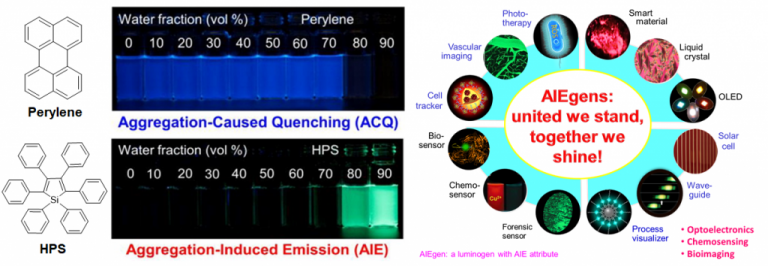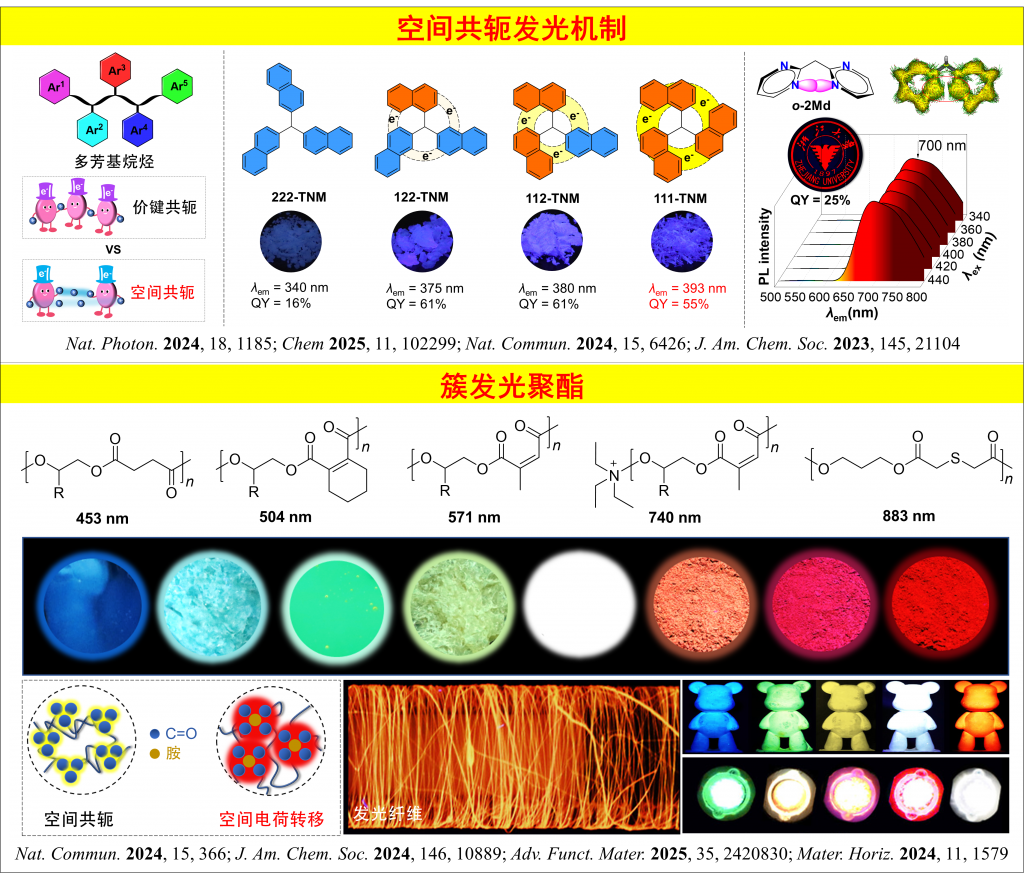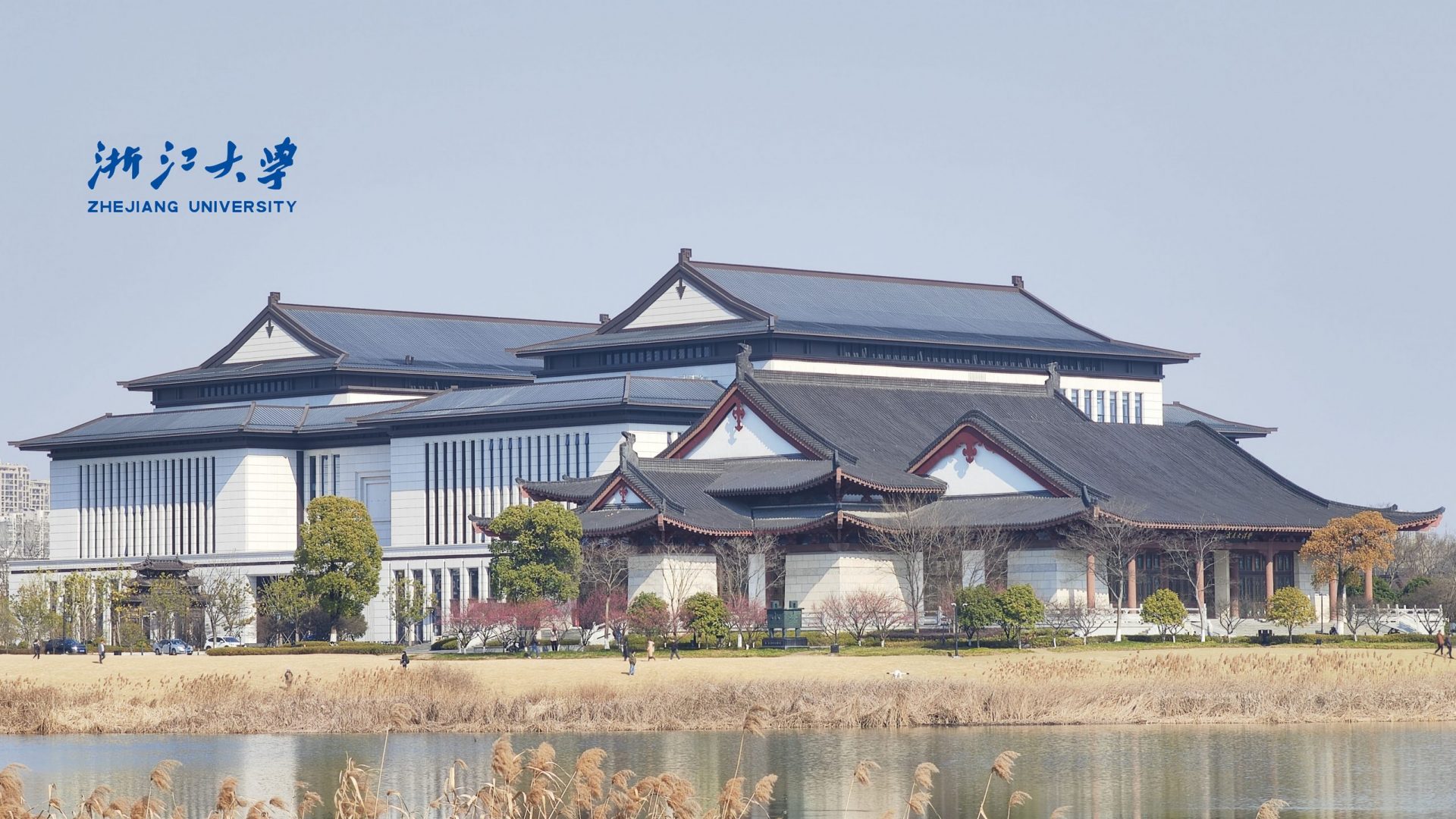Aggregation-Induced Emission (AIE)

Luminescence is often weakened or quenched at high concentrations, a phenomenon widely known as ‘concentration quenching’. A main cause for the quenching process is mechanistically associated with the ‘formation of aggregates’, which is probably why the concentration quenching effect has frequently been referred to as ‘aggregation-caused quenching’ (ACQ). In 2001, we discovered an uncommon luminogen system, in which aggregation worked constructively, rather than destructively as in the conventional systems. We found that a series of silole derivatives were non-emissive in dilute solutions but became highly luminescent when their molecules were aggregated in concentrated solutions or cast into solid films. Since the light emission was induced by aggregate formation, we termed the process ‘aggregation-induced emission’ (AIE). Currently, the AIE luminogens have been applied in many fields, such as electronic devices, biosensors, chemosensors, and theranostics.
Through-Space Conjugation and Clusteroluminescence

π-Conjugated chromophores have been investigated for many years and successful theoretical models have been developed to explain their photophysical properties. However, materials have appeared sporadically that do not fit within these existing models. Some of these materials possess entirely nonconjugated structures based on saturated C–C, C–O or C–N bonds, but their aggregates or solid-state forms show bright visible emission. This phenomenon is termed as clusterization-triggered emission (CTE) and the materials possessing the property are labeled clusteroluminogens. The materials are generally classified into three categories: polymers (natural and synthetic polymers), small molecules (with and without aromatic rings) and metal clusters. Possible luminescence mechanisms underpinning the different categories of clusteroluminogens are analyzed individually. Finally, we put forward a comprehensive theory of the through-space conjugation (TSC) for these chromophores. Based on the CTE effect and TSC theory, various applications have been envisioned, for example in the areas of process monitoring, structural visualization, sensors, and probes. It is anticipated that this new research direction will bring many breakthroughs, not only in the theoretical areas, but also in these advanced applications of light-emitting materials.
Acetylenic Polymers

Tang’s research group has been working on the development of new polymerization routes from alkyne reactions, and has succeeded in the syntheses of a number of new functional conjugated polymers from acetylenic monomers. The backbones of the acetylenic polymers are pi-conjugated due to the electronic communications between their electronically unsaturated repeat units. This unique electronic structure has the potential to endow the polymers with novel properties which are very difficult, if not impossible, to access by their congeners of condensation and vinyl polymers with electronic saturation. The prerequisite to realize this attractive potential is to establish versatile processes for synthesizing the polymers.
